More and more tourists have been stepping into China in the recent ten years. With an initial impression, you may pay much attention on the news concerning China. For those who decide to come back for more details, we would like to recommend some theme tours to inner China. You definitely can get deep understanding on the vast land.
First trip to China
The Region of Ethnic Minorities
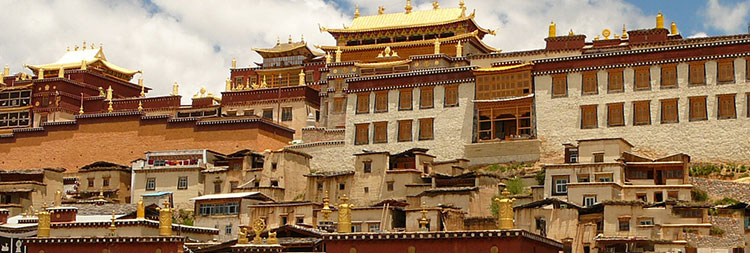 Ganden Sumtseling Monastery (Shangri-la)
Ganden Sumtseling Monastery (Shangri-la)
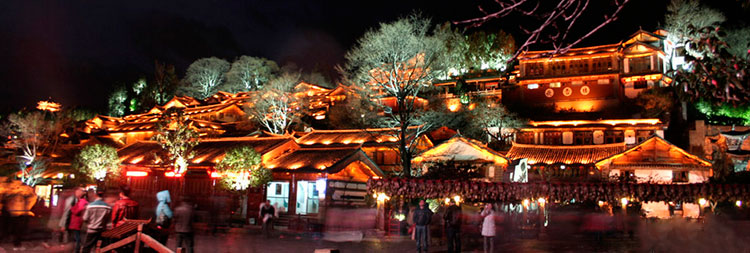 Ancient City of Lijiang
Ancient City of Lijiang
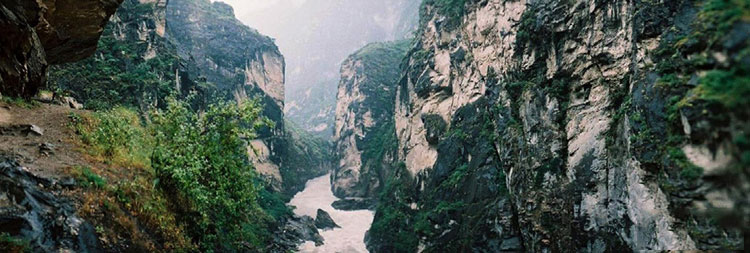 Tiger Leaping Gorge (Yunnan)
Tiger Leaping Gorge (Yunnan)
First of all, let’s searching for the real Shangri-la(Zhongdian) in Yunnan Province, the region of ethnic minorities. Among the country’s 56 ethnic groups, 25 are found in Yunnan. A diverse history and different lifestyle have made Yunnan a museum of human society. Their distinctive cultures, folkways and architectural styles seem scrolls of painting to unfold before the eyes. Wandering on the small towns, you can easily see minority people in embroidered garb selling fruit, vegetable and a variety of beautiful flowers.
Yunnan is also a natural museum. Different topography and climate have formed here a unique biosphere ranging from the tropical to the frigid. Nature has endowed with numerous wonders and magnificent landscapes. Visitors will be attracted by sky-piercing snow mountains, thick primitive forests, mysterious deep valleys, torrential rivers, calm and limpid highland lakes, as well as many wonderful Karst mountains.
The wonder on earth, Stone Forest near the Provincial Capital Kunming is actually submarine wonderland turned to be. The Tiger Leaping Gorge, one of the world’s deepest canyons with a depth of 3200 meters. The Snow Dragon Mountain standing beside old Lijiang town is superb with its loftiness and elegance. Noted for the wind, the flowers, the snow and the moonlight, the small ancient town Dali is entirely a paradise. Taking an adventure tour to discover the mystery of real Shangri-la will make you feel returning to nature. Further more, Yunnan is also framed as the Kingdom of Animals and Pants. Tourists can stroll through massive rain forests of Xishuangbanna where rare flora and fauna can be found.
The Ancient Silk Road
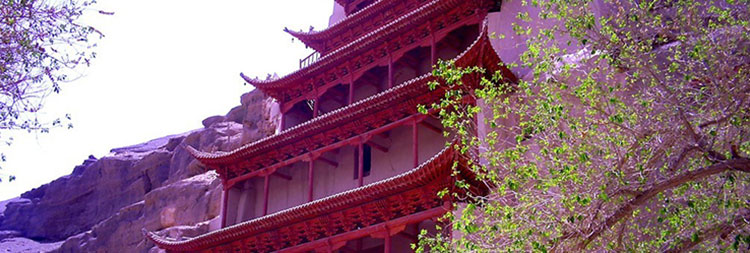 The Mogao Grottoes (Dunhuang)
The Mogao Grottoes (Dunhuang)
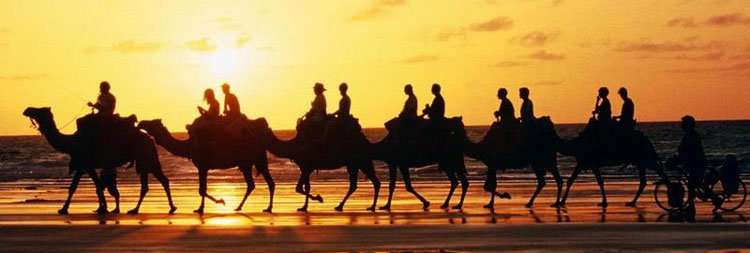 Silk Road Camel
Silk Road Camel
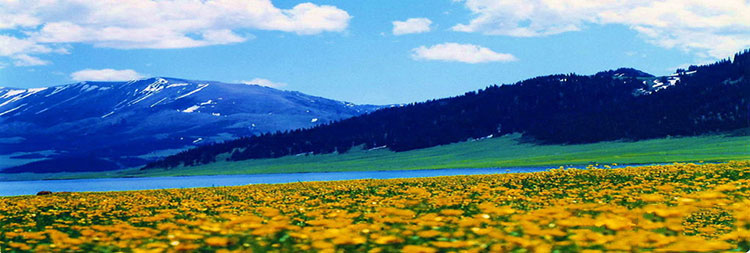 Heavenly Lake (Urumqi)
Heavenly Lake (Urumqi)
Silk Road, known by everyone no matter you have been to China or not. It was recorded in the world history. East and West first met more than 2000 years ago on the historical Silk Road, which is ancient China’s only major connection to the outside world. The Silk Road was a trading route where Persian and other merchants transferred fine Chinese silks into the courts of imperial Rome. In return, China received strange new commodities from the West. The most lasting import, however, was cultural, artistic and religious, the introduction of Buddhism from India. Buddhism altered the appearance of China, shaping its temple architecture and religious arts. Buddhists found a tolerant home in China during the Tang Dynasty when the silk trade reached its zenith.
Traveling along the Silk Road may be a best way to appreciate the properties of the multicultural, and to recall the true stories in the past. Let’s retrace the route and start at Xian, the capital of the ancient Chinese Empire, enter northwest across the remote provinces of Gansu and Xinjiang, visit some main towns along the gobi desert. Lanzhou, Jiayuguan Pass, Dunhuang, Turpan, Urumqi and stop at the last hub of the ancient Silk Road, Kashgar. You will explore the legendary oasis towns and rummage through the medieval marketplaces of Urumqi and Kashgar. Along the way you will pass the ruins of desert cities, the caves of splendid Buddhist sculptures, the last outposts of the Great Wall, and the lakes and mountains passes clinging to the fringes of imagined heavens. In the section of Xinjiang Province, the towns between are remote, marked by mosques rather than temples, occupied by Uighur Muslims rather than Han Chinese. The Silk Road winds through a lost world, an alien landscape of howling sand dunes and silent snowy peaks.
The route of Silk Road belongs to someone who prefers an adventure tour, be eager to explore the essence of Chinese humanities. It seems to take a time machine across back to the remote dynasties enroute. The experience will be sharp different with your first trip in some flourishing cities, but you can truly get something real.
Tibet and Lhasa
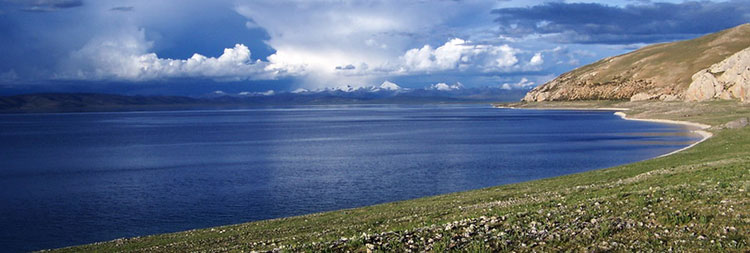 Beautiful scenery in Tibet
Beautiful scenery in Tibet
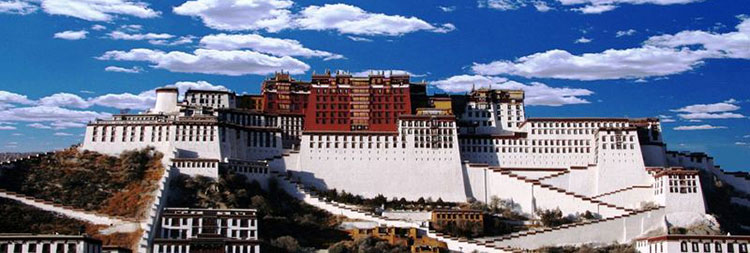 Potala Palace
Potala Palace
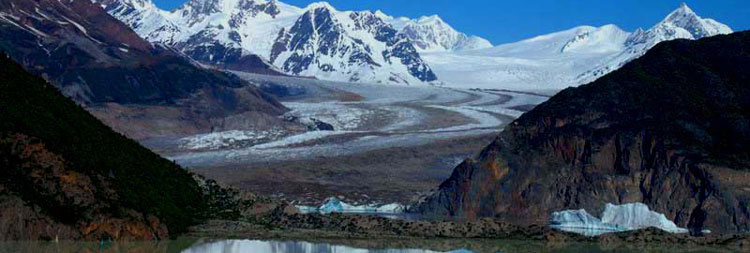 Beautiful scenery in Tibet
Beautiful scenery in Tibet
Tibet has long been known as "the Roof of the World". Himalayas standing erectly, Brahmaputra streaming endlessly, largo grasslands, white snow, flying sutra streamers, simple hearted and heroic people, this is China's Tibet, the cradle of Yangtze River and Yellow River, surely a destination apart from most in the world. Entering Tibet, you feel as though you've entered an entirely different world. The traditional Tibetan culture represented in the region remains strong. Tibetan history, culture, and religion are just as enchanting and colorful.
Large amount of historical sites make people feel quiet and peaceful. Its brilliant and ancient monasteries, unique local custom attract flocks of tourists. The famous sacred Potala Palace will be your first view. The countless religious pilgrims, the curing upward of incense and the countless prayer wheels spinning in or around the Jokhang Monastery, seem to tell the sacred stories of the past. Norbulingka is the Summer Palace comprising many buildings of Tibetan architecture. There are plentiful lakes spotted on the vast holy land, the biggest one being Lake Namtso or Heavenly Lake. The greatest diversity in landscape, vegetation and wildlife was found in its broad and fertile valleys of the Himalayas. Mt.Everest attracts thousands of mountaineers to challenge both nature and themselves.
Visiting a local family is one of your experiences. You will have a great impression by Tibetan people’s benignancy and hospitality. Tasting the local food and dancing with beautiful Tibetan girls are the excellent experiences to celebrate joyful times. Buying some typical handicrafts may add extra happiness to your visit. Its unique social and religious systems, as well as life styles have attracted Western adventurers for centuries. With advanced telecommunication and convenient communication both on land and air, Tibet today although no longer completely mysterious. Currently, there are some 60 sites open to tourists in Tibet. They are distributed in Xigaze, Shannan, Nagqu, Ngari and Nyingchi, centering on the city of Lhasa.
The cradle of Chinese Civilization and Culture
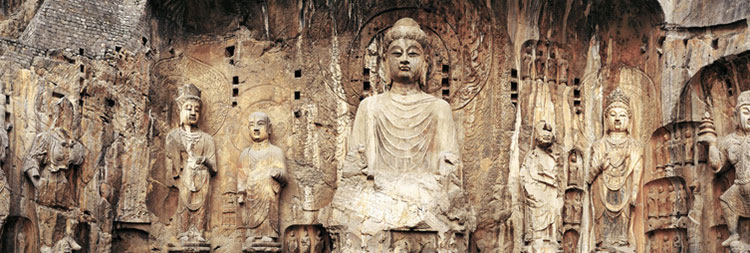 Longmen Grottoes (Luoyang)
Longmen Grottoes (Luoyang)
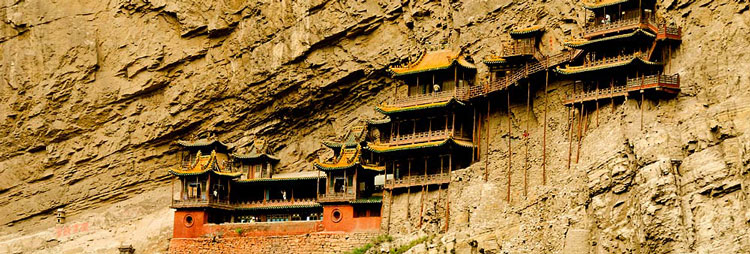 Hanging Temple (Datong)
Hanging Temple (Datong)
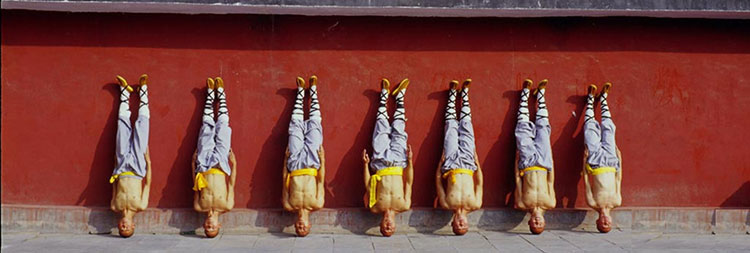 Henan Shaolin Temple
Henan Shaolin Temple
The central region of China, surrounded by Shanxi, Henan and Shaanxi provinces, is the cradle of Chinese civilization. Based on the long history over two thousand years, most of cities here are on the list of historical and cultural cities. Tourists can easily reach this region because they are the neighbour provinces of Beijing.
We can start the searching from Datong, a northern outpost on the Mongolian frontier in the past, endowed with rich cultural relics, noted monasteries, well-known pagodas, grottoes and illustrious frescoes as well. Then followed by small ancient town Pingyao, the walled city of antiquity on the World Cultural Heritage list in 1997. You can find out lots of historical remains here.
Just 10 miles west of downtown Datong is the most spectacular array of ancient stone carvings, Yungang Grottoes. The grottoes are out of cliff-sides in honeycomb pattern, stretching for 1000 meters from east to west. The suspended temple, hangs in mid-air of the canyon and consists of 40 cave rooms carved into limestone, fronted with wooden facades, columns and tiled roofs, all connected by a series of catwalks and bridges perched on jutting beams and posts socketed in solid rock. The Wooden pagoda is the tallest and the oldest existing wooden pagoda in the world, rich in detail and noble in proportion. Pingyao has well-preserved ancient city walls, local residences, government offices and various stores and shops of the Ming and Qing dynasties. Shops open their doors to reveal modern cashier equipment perched on antique tabletops. Bustling about are bicycles, rickshaws and scooters. Here is in Pingyao, modernity lives with centuries old relics.
Move your footsteps into next province, Henan, is home of Shaolin Martial Art and the ancient capitals of more than 20 dynasties and kingdoms in the history. The Yellow River runs across the northern part of the province. The most spots of historical and cultural interests gathered in Luoyang, Songshan Mountain and Kaifeng.
Luoyang, was the first to be made a capital, seven ancient capitals in total. You can easily find centuries ago culture relics here. Longmen Grottoes, an outdoor art museum of stone carvings, display the typical imperial style and combine features of numerous sects of Buddhism. Along the cliffs, there are more than 2100 niches, 2800 inscribed stone tablets. The White Horse Temple is the first Buddhist temple in ancient China. Shaolin Temple and its consummate martial art performance in Songshan Mountain, are must-see content when you are in Henan. In addition, Luoyang peony, the national flower wins a world fame. In mid-April, the fragrant peonies are in full blossom with a blaze of colors. The city is submerged in the sea of flowers.
The splendors of Kaifeng appeared in Song dynasty, about 1000 years ago. From an ancient painting scroll, we can aware the city’s glory at its vibrant zenith, with its wide Imperial Way, arched stone bridges, gleaming temples, lively merchant districts and camel caravans entering its gates. Although it remains largely forgotten, Kaifeng reconstructed itself for visitors as the 12th-century capital it once was.
In fact, each region of China has its own identity. Whether you choose to explore China on your own or follow our guidance in a private tour, you should find something valuable from our recommendation. A profound China is worth you to experience its culture, seek its treasures and view its natural wonders.
Do not hesitate to Tailor Your Own Itinerary now. Try to be a knowledgeable traveler and design your favorite blueprint. Be sure we are your professional tour consultant and willing to assist you to achieve your China dreams.













